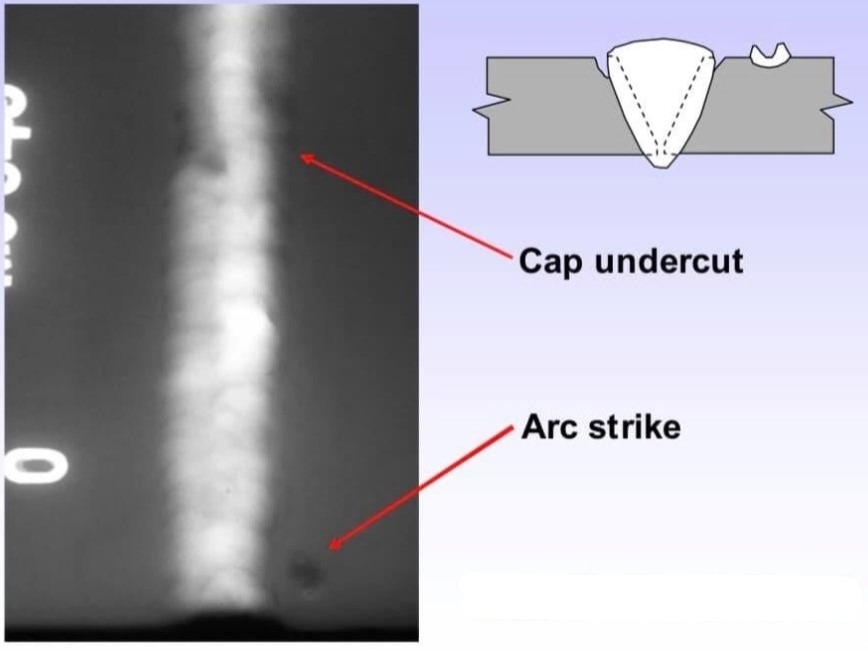Exactly How to Prevent Weld Undercut: Important Tips for Welders
Exactly How to Prevent Weld Undercut: Important Tips for Welders
Blog Article
A Comprehensive Guide to Identifying, Fighting, and Fixing Undercut Welding Troubles in Your Welding Jobs
In the world of welding, coming across undercut issues is an usual difficulty that can jeopardize the architectural honesty and total quality of your welding projects. Comprehending the source behind undercut welding, being able to precisely detect it in your welds, and applying reliable preventative steps are vital abilities for any type of welder. Additionally, having the understanding and strategies to fix undercut issues when they do occur can make a significant difference in the last end result of your welding undertakings. Keep tuned as we check out the crucial components of identifying, protecting against, and dealing with undercut welding problems, providing you with useful understandings and strategies to boost your welding skills to the next level.
Usual Sources Of Undercut Welding
Undercut welding, a common problem in welding procedures, can be triggered by various variables that require to be meticulously determined and dealt with to make sure the integrity of the weld joint. One of the primary causes of undercut welding is extreme warmth input.
Another common reason of undercut welding is improper welding method. Poor manipulation of the welding torch or gun, inaccurate angle or range between the lantern and the work surface, or irregular traveling speed can all add to the development of undercut. Furthermore, using the wrong welding consumables or electrode size for a certain joint configuration can lead to undercut issues. Recognizing these origin and carrying out restorative actions is important in avoiding and rectifying undercut welding problems in welding projects.
Identifying Undercut in Welds

To determine undercut precisely, appropriate lights and zoom devices are vital to check the weld joint completely. Utilizing devices such as a welding scale or a magnifying glass can help in identifying even the smallest undercut blemishes. Additionally, running a finger or a fingernail along the weld joint can sometimes disclose undercut, as the surface might feel unequal or have a dip where the undercut exists.
Safety Nets for Undercut
Having a deep understanding of the root causes of undercut in welds allows for the execution of reliable precautionary actions to maintain weld top quality and honesty. One vital precautionary measure is proper weld joint prep work. Making certain that the sides are tidy, cost-free of impurities, and try these out appropriately beveled can substantially decrease the chance of undercut (Preventing weld undercut). In addition, choosing the webpage appropriate welding criteria, such as voltage, present, and travel speed, is crucial. These setups should be optimized to avoid too much heat input, which can lead to undercut development.

Techniques for Repairing Undercut

Enhancing the welding current or decreasing the traveling rate can aid fill up in the undercut. Additionally, transforming the welding method from a push to a drag or vice versa can also help reduce undercut.
An additional strategy is to utilize a weaving motion while welding to guarantee correct sidewall fusion and fill in the undercut. By oscillating the welding arc back and forth within the weld joint, the welder can deposit a lot more filler product into the undercut areas, properly getting rid of the issue.
In addition, grinding out the undercut and rewelding the joint can be a sensible solution for a lot more extreme undercut issues - Preventing weld undercut. This process entails eliminating the undercut area, preparing the base steel, and after that rewelding the joint with proper welding specifications and techniques to stop undercut from returning

Professional Tips for Preventing Undercut
Utilizing correct welding techniques and maintaining control over key welding specifications are vital methods for welders aiming to stop undercut in their weld joints. Furthermore, choosing the ideal welding process and filler metal for the certain application can aid stop undercut. Maintaining a consistent travel rate throughout the welding procedure is one more crucial tip to avoid undercut.
Conclusion
Finally, identifying, avoiding, and taking care of undercut welding issues in your welding projects is critical for ensuring strong and sturdy welds. Preventing weld undercut. By understanding the typical root causes of undercut, having the ability to determine it in welds, executing safety nets, and utilizing correct strategies for dealing with undercut, you can stay clear of potential issues and develop top quality welds. Adhering to expert tips for avoiding undercut can assist you improve your welding abilities and produce much better lead to your projects
Undercut welding, a typical problem in welding procedures, can be caused by numerous factors that need to be very carefully determined and resolved to make certain the integrity of the site weld joint. In addition, running a finger or a fingernail along the weld joint can occasionally expose undercut, as the surface may feel irregular or have a dip where the undercut exists.
Using correct welding methods and preserving control over essential welding specifications are critical techniques for welders aiming to prevent undercut in their weld joints.In final thought, determining, stopping, and repairing undercut welding problems in your welding projects is crucial for making sure long lasting and solid welds. By understanding the usual causes of undercut, being able to identify it in welds, applying precautionary procedures, and utilizing correct strategies for fixing undercut, you can avoid possible problems and produce premium welds.
Report this page